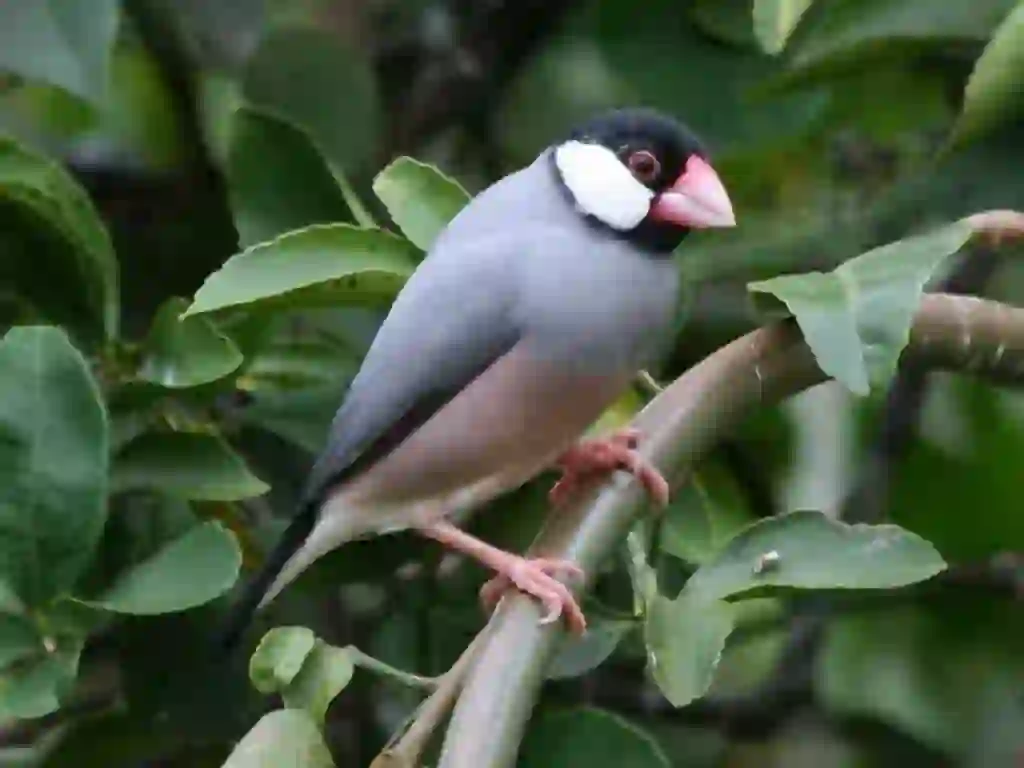
Java Sparrow
Java Sparrow
Java Sparrow
Popular as pets for their cute and bouncy appearance, they are easy to tame and become your soothing companions. Why not spend peaceful days with these adorable budgies?”
Java Sparrow Basic Infomation
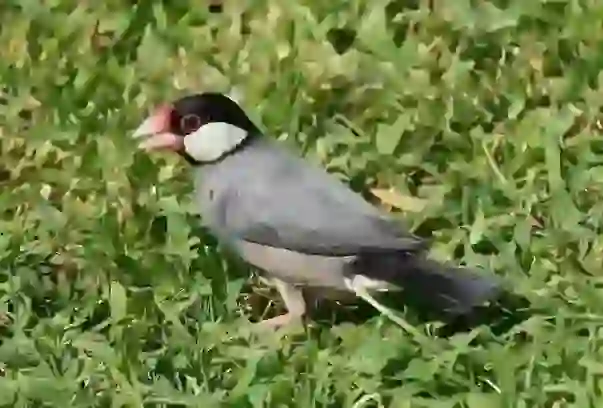
Animalia Chordata Vertebrata Aves Passeriformes Estrildidae munias genus L. oryzivora.
Length 17㎝. Weight 28g.
Habitat. They have been introduced and established in various parts of the world, such as Indonesia (Java and Bali islands), the United States, Sri Lanka, Fiji, the Philippines, Brunei, Malaysia, and Mexico.
They have also been found to settle in Japan, in places like Osaka Prefecture, Tokyo Metropolis, Hyogo Prefecture, and Fukuoka Prefecture.
They mainly inhabit grasslands, shrublands, farmlands, and gardens below 1,500 meters above sea level, and live in pairs or small flocks.
Java Sparrow Q&A

Where does Java Sparrow get its name?
They are called ‘Java Sparrow’ in English, but in Japanese they are actually called ‘bunchou’. This time, we will introduce why they are called bunchou in Japanese and the origin of their name. Bunchou is written in kanji as ‘bunchou’. This ‘bun’ does not mean a sentence of writing, but rather ‘aya’, which means a pattern or a color.
They are beautiful birds with patterns and colors on their bodies, and they got their name ‘bunchou’ from their appearance.
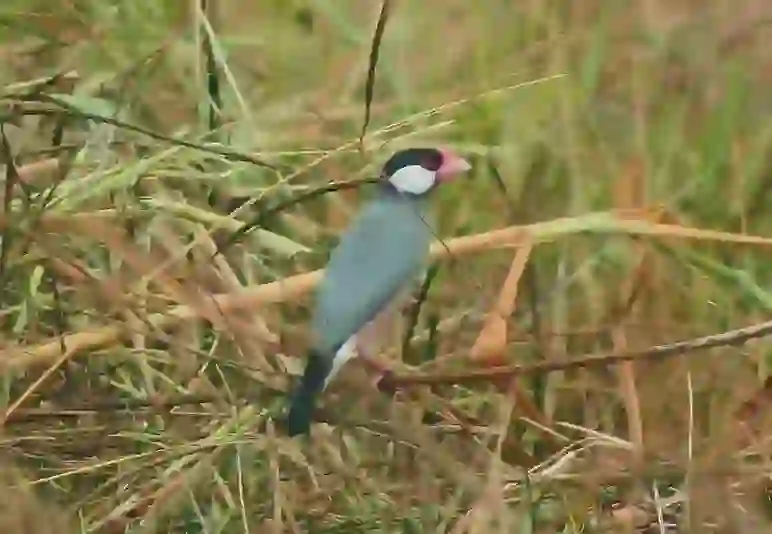
When did Java Sparrow come Japan?
Java Sparrow were living in places like Malaysia, but they came to Japan around 1697 in the early Edo period, as there was already a word and a picture of Java Sparrow in a book published at that time.
Nowadays, Java Sparrow are one of the first names that come to mind when talking about pet birds, but back then they were considered quite rare and expensive animals, and they were kept as ornamental pets by nobles and such.

What is the lifespan of Java Sparrow?
The lifespan of Java Sparrows kept as pets is 8 to 10 years. However, there are some Java Sparrows that have lived as long as 18 years.
Especially, Normal Java Sparrows and Japanese Rice Birds that are close to the original species tend to have strong bodies and live longer, while special breeds of Java Sparrows such as Silver Java Sparrows and Cinnamon Java Sparrows tend to have more individuals with weaker bodies.
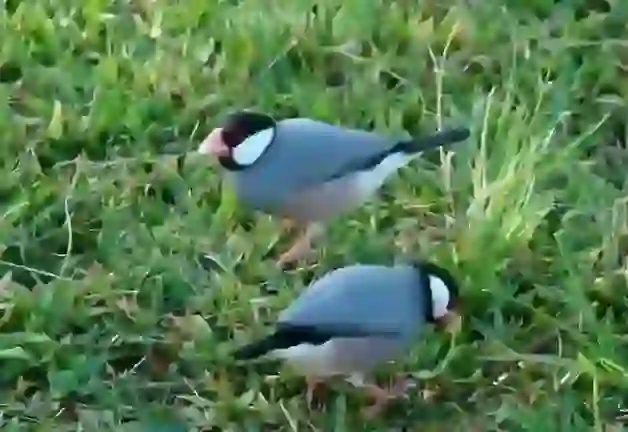
Is it true that Japanese Rice Bird was born in Japan?
This is true. Java Sparrows were originally the Normal Java Sparrows, which had black heads, white cheeks, and gray bodies, and this was the only type that came to Japan.
In Japan, Aichi Prefecture was especially famous for breeding Java Sparrows, and there a pure white Java Sparrow was born by chance and increased from there.
That’s why, even if the children of Japanese Rice Birds are not necessarily Japanese Rice Birds, that’s a remnant of that time.
Japanese Rice Birds have been born for quite a long time now, and they don’t seem to have particularly weak bodies.
Other Silver Java Sparrows and Cinnamon Java Sparrows will also gradually establish their breeds and there will be fewer individuals with weak bodies.

What is the difference between Normal Java Sparrow and Pied Java Sparrow?
These two birds are often confused and probably the one you have in mind with a black head, white cheeks, and gray body is the Normal Java Sparrow.
The Pied Java Sparrow has a similar appearance to the Normal Java Sparrow, but with white spots all over its body. These white spots look like cherry blossom petals, so it was named the Pied Java Sparrow.
However, currently this Normal Java Sparrow is often called the Pied Java Sparrow.
There are also some Pied Java Sparrows with less noticeable white spots and some Normal Java Sparrows with more noticeable white spots, and they may be described as Normal (Pied) Java Sparrows.
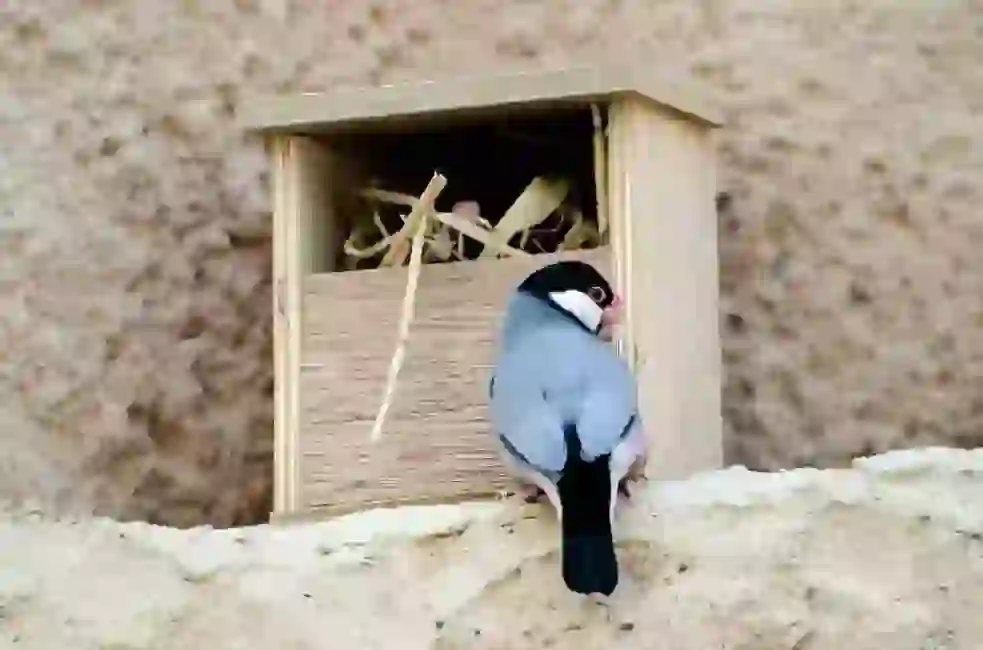
How to make it a hand-riding Java Sparrow?
One of the charms of keeping Java Sparrows as pets is that they can become hand-tamed Java Sparrows that will perch on your shoulder or hand, don’t you think?
If you want to make sure that your Java Sparrow is hand-tamed, you need to adopt it as a pet when it is still a chick that cannot feed itself.
There are rare cases where adult Java Sparrows can become hand-tamed even if you adopt them, but it depends on the individual’s personality, so it is not very recommended if you want to make sure that your Java Sparrow is hand-tamed. ※When keeping animals, you need to follow the laws that are established by each country.
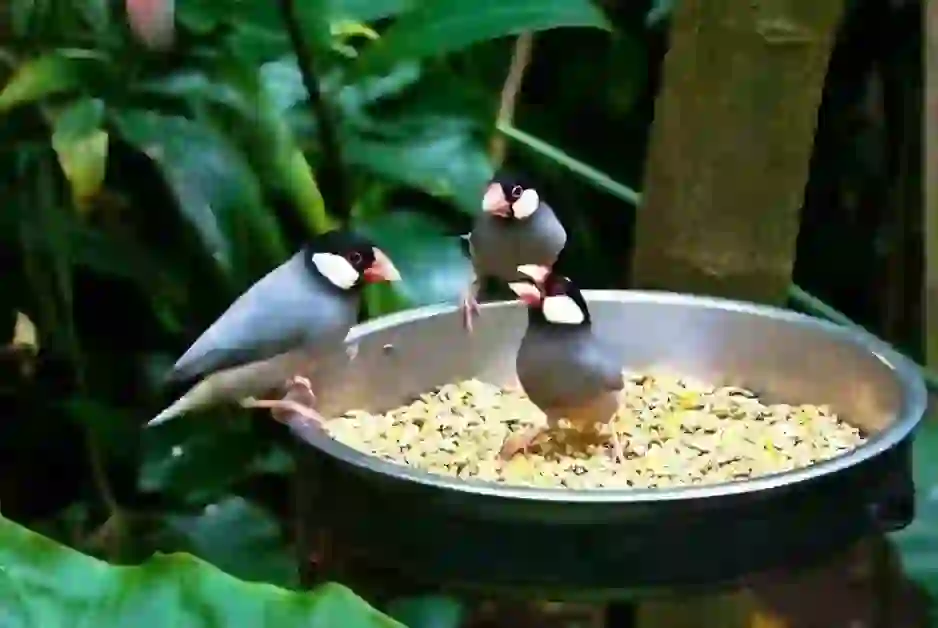
What is "Grasp Java Sparrow"?
When you are researching about keeping Java Sparrows as pets, you may come across the words Nigiri Java Sparrow and Beta-nare Java Sparrow.
Nigiri Java Sparrow and Beta-nare Java Sparrow are Java Sparrows that not only perch on your hand or shoulder as hand-tamed birds, but also prefer to be wrapped in your palm and stroked.
These are not determined by how long you have raised them in your hands, but by the personality of the Java Sparrow itself, or by the breeding environment such as whether you keep multiple birds or one bird.
If you aspire to have a Nigiri Java Sparrow or a Beta-nare Java Sparrow, the probability will increase if you keep one bird, but please accept it as the individuality of the one you adopted. ※When keeping animals, you need to follow the laws that are established by each country.
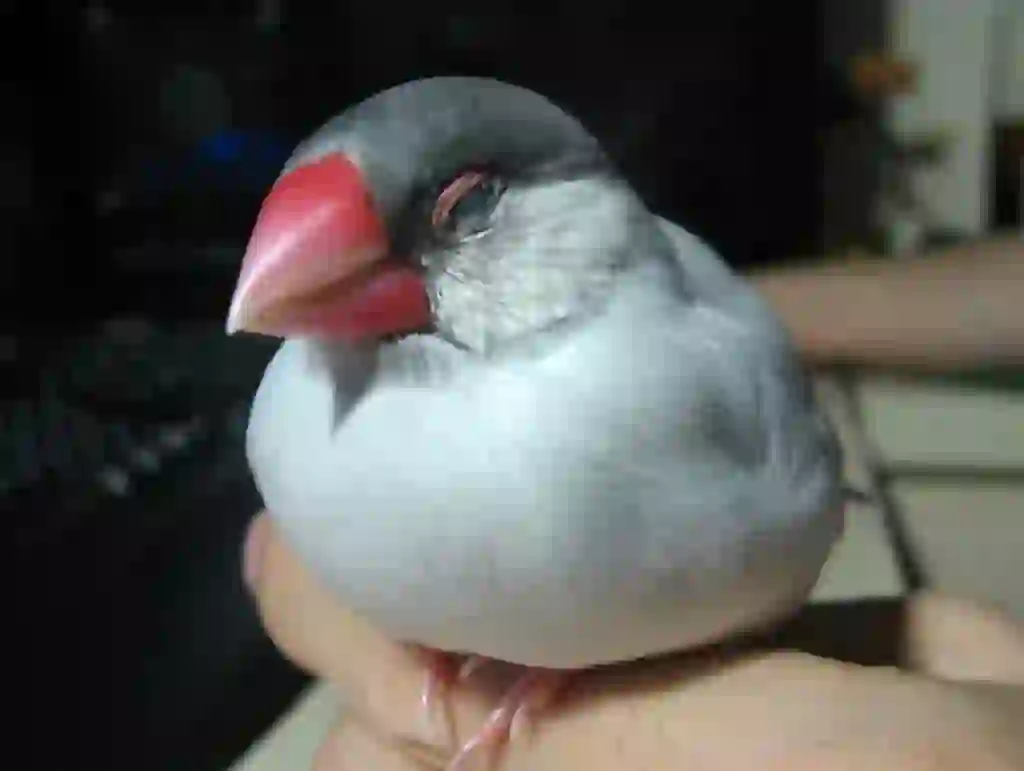
What is the personality of Java Sparrow?
Java Sparrows are often very irritable and aggressive.
So when you keep multiple birds, you need to be careful and if their personalities match, you can keep them as a pair and enjoy the pleasure of having chicks.
But if you keep Java Sparrows that don’t get along in one cage, they may fight and injure each other with bleeding or even kill each other in the worst case.
To prevent that, you can either keep one bird, ask the pet shop to choose the ones that seem relatively friendly when you buy them, or keep them in separate cages one by one.
When you ask the pet shop to choose for you, if you buy adult birds and they get along well, there is almost no problem, but their relationship may worsen due to the change of environment, and if you buy chicks, their relationship may worsen as they grow up, so it is not certain.
Java Sparrows, who have such irritable and aggressive personalities, are actually shy and timid, and once they trust you, they are quite spoiled.
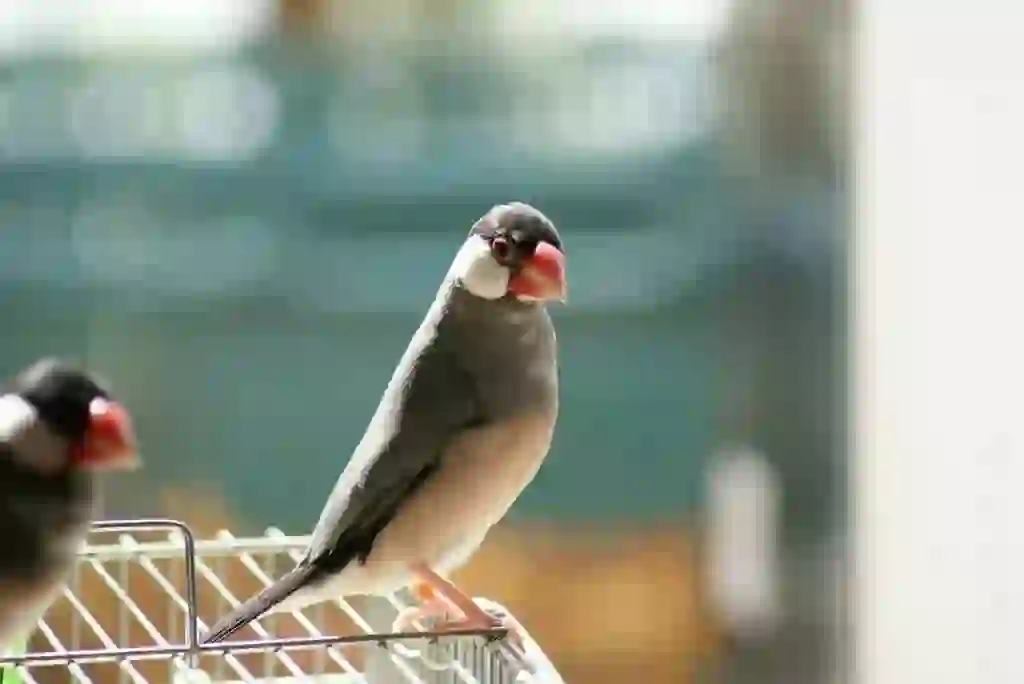
How much does Java Sparrow cost?
You can buy Java Sparrows at a very reasonable price.
Normal Java Sparrow. 1,500-2,000 yen. Japanese Rice Bird. 2,500-3,600 yen. Cinnamon Java Sparrow. 5,000 to 6,500 yen. Silver Java Sparrow. 5,000 to 9,700 yen.
This is how it is. Please be careful not to keep them casually just because they are easy to keep.

Would you like to become a part of the 'Animalbook.jp'?
Turn your knowledge into Q&A and share it with the world. ※Publication will be activated after purchase. Let's share information together!
Java Sparrow Type of List
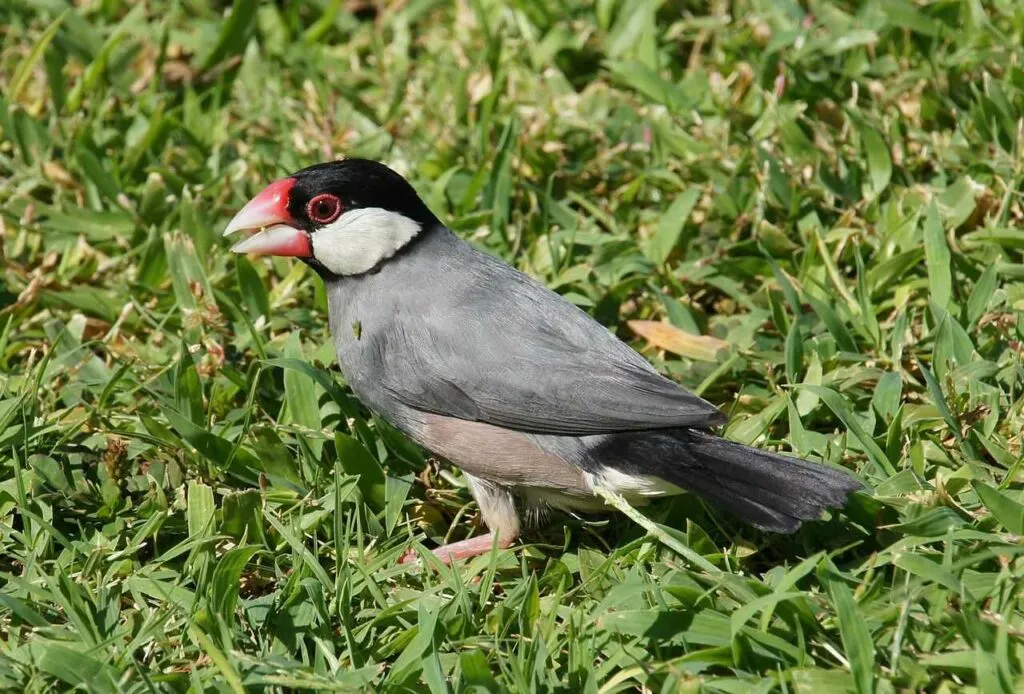
- Normal Java Sparrow.
- Pied Java Sparrow.
- Japanese Rice Bird.
- Cinnamon Java Sparrow.
- Silver Java Sparrow.
- Cream Pastel Fawn.
Information
Congratulations! You are the first commenter!

Create Your Favorite List!
Java Sparrow
Save the animals you love! Build your own list to quickly revisit your favorites later.

Would you like to leave a comment?
※Please note: This is for the purchase of rights to post comments within the article.
Find Your Favorites!
Our shop offers a unique and attractive selection of goods themed around various animals.
Java Sparrow References

- ウィキペディア フリー百科事典 ブンチョウ https://ja.wikipedia.org/wiki/ブンチョウ
- 雑学ネタ帳 「文鳥」名前の由来 https://zatsuneta.com/archives/006555.html#:~:text=文鳥は、インドネシアのジャワ,渡来したとされる。&text=このように「文鳥」という,由来する言葉である。
- NPF ナチュラルペットフーズ株式会社 人気の小鳥・小動物 ブンチョウ https://www.naturalpetfoods.co.jp/products/lonchuraoryzivora/
- Travel Book ライフスタイル 【ペット】文鳥の飼い方:種類・寿命・値段まとめ https://www.travelbook.co.jp/topic/17813
- peco 文鳥と暮らした!文鳥の魅力と種類をご紹介 https://peco-japan.com/55303
Java Sparrow Introduction of media used

出典:https://pixabay.com/images/id-4570422/

出典:https://commons.wikimedia.org/wiki/File:Java_sparrows.jpg

出典:https://pixabay.com/images/id-316282/

出典:https://pixabay.com/images/id-2144887/

Help Enrich Our Animalbook.jp with Your Media!
We are constantly looking to expand and enrich our Animalbook.jp with amazing photos and videos of animals. If you have any media that you'd like to share, please contribute and help us showcase the beauty and diversity of the animal kingdom. Your submissions will be credited and featured in our encyclopedia, reaching a wide audience of animal lovers.
















